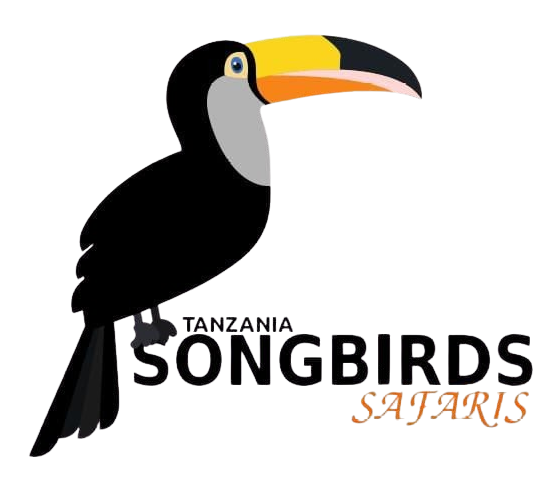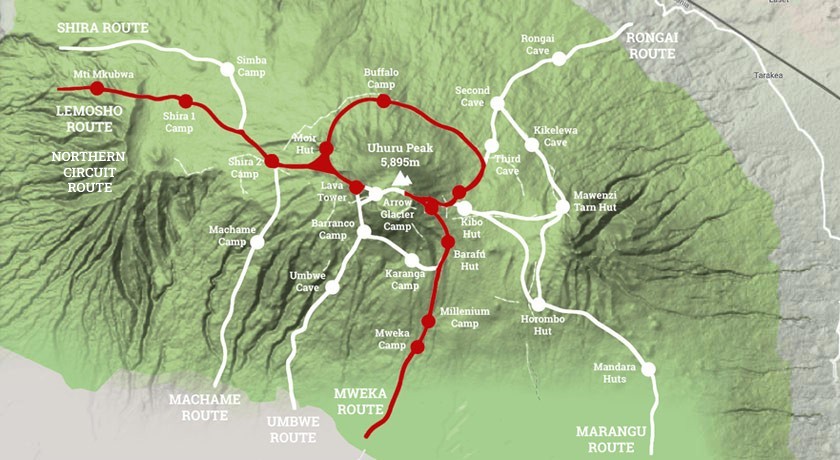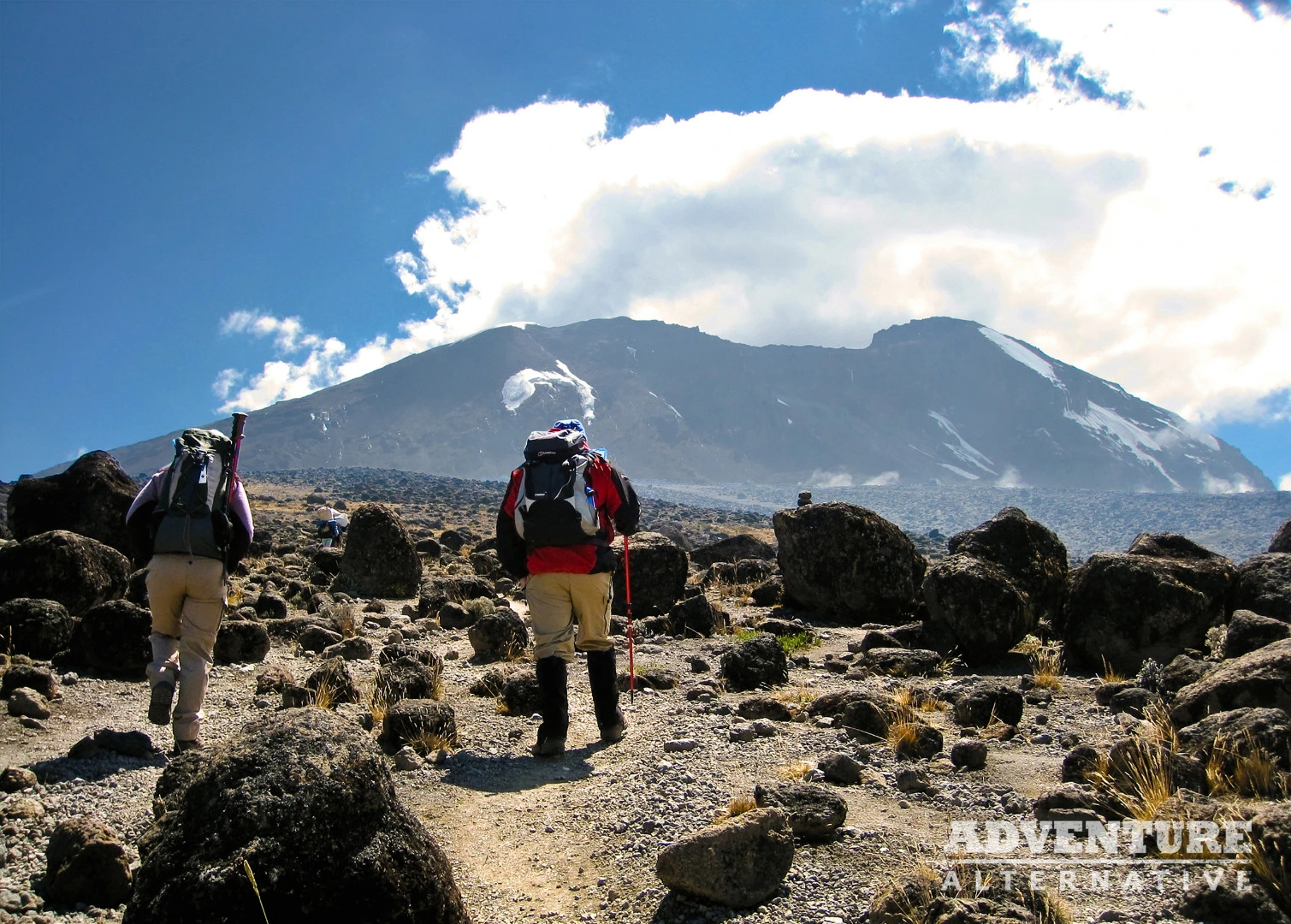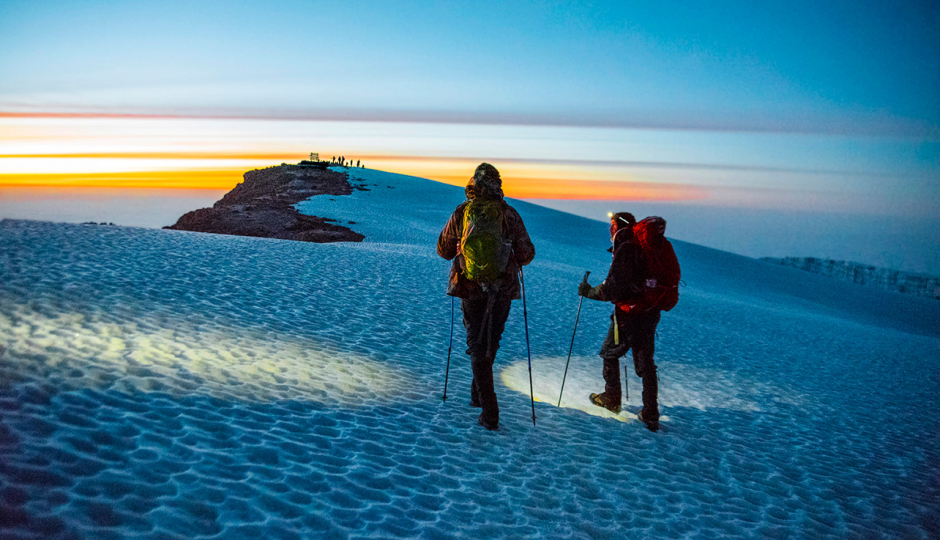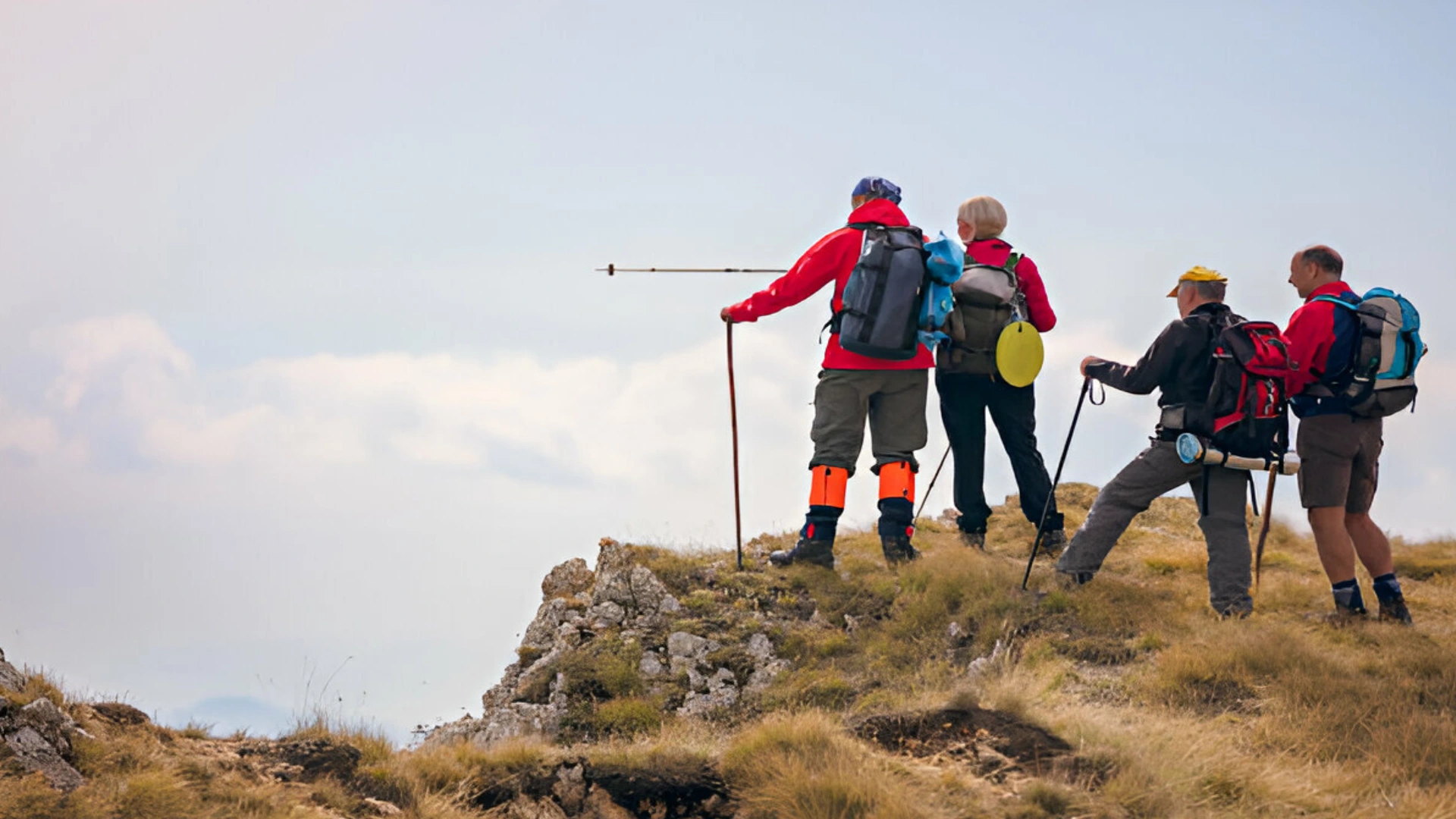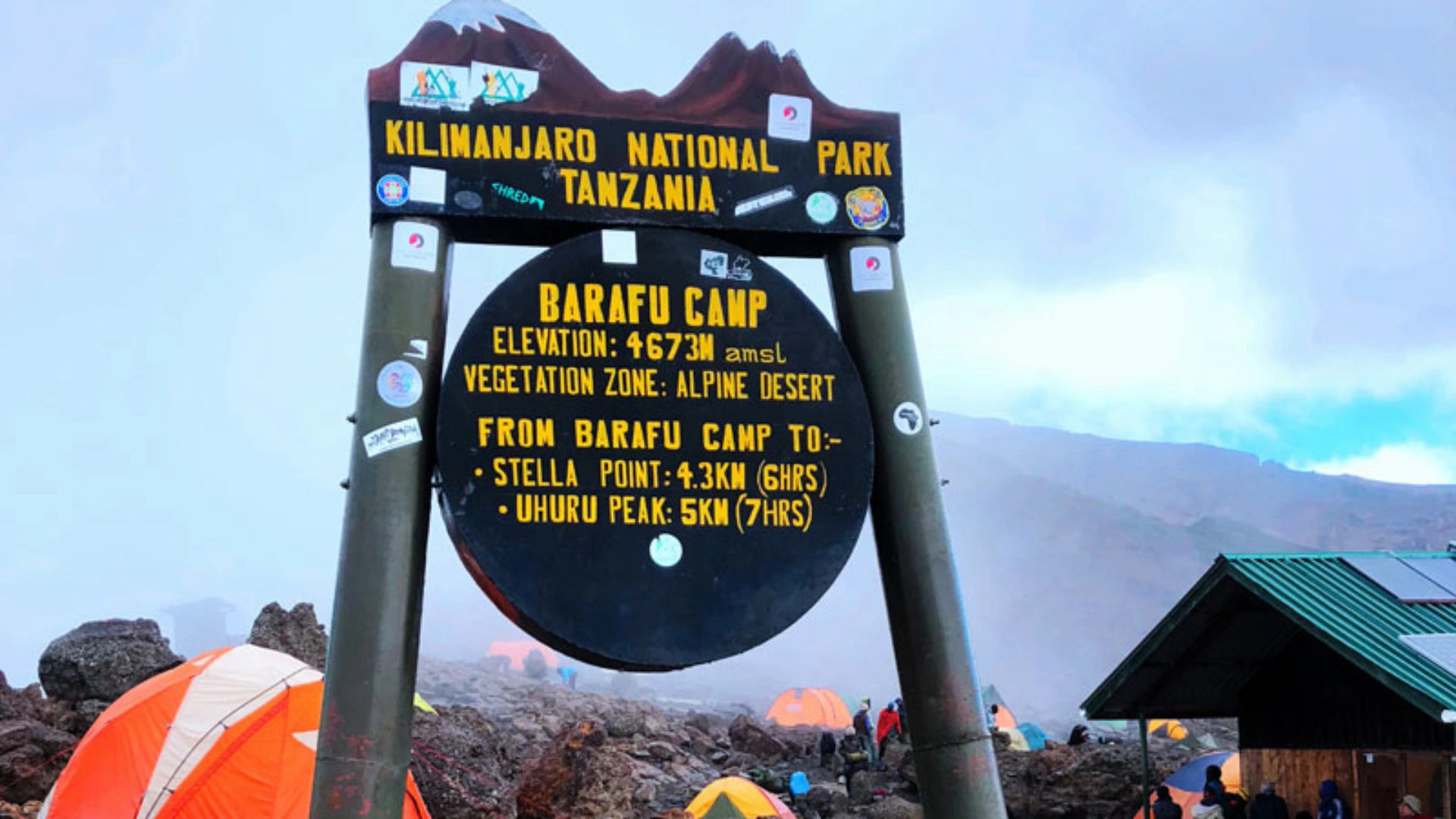9 Day Via Northern Circuit Route For Climbing Kilimanjaro
The Kilimanjaro Northern Circuit Route is the newest and longest route, approaching from the west and offering stunning 360-degree mountain views.
- Duration: 9 days
- Difficulty: Moderate to challenging
- Price Per Person: $ 2,495- $ 2,645
- Scenery: very Good
Overview: Kilimanjaro Northern Circuit Route Trekking
The Northern Circuit Route is one of the most scenic and least traveled paths to the summit of Mount Kilimanjaro, offering a peaceful, immersive trek through diverse ecosystems and stunning landscapes. Spanning 9 days, this route is designed for climbers who want a longer and more gradual ascent, ensuring ample time for acclimatization and a higher chance of summiting successfully. As you traverse through the rainforest, moorland, and alpine desert, you’ll enjoy breathtaking views of the mountain and the surrounding wilderness, all while avoiding the crowds that typically frequent the more popular routes.
The Northern Circuit is the longest route on Kilimanjaro, and its extended duration allows for better acclimatization, significantly reducing the risk of altitude sickness. Its remoteness ensures a quieter trek, and the diverse environments provide a rich, ever-changing landscape as you progress higher on the mountain. Whether you’re an experienced mountaineer or a first-time climber, the Northern Circuit offers a truly rewarding experience, blending adventure with incredible natural beauty.
Trip Highlights
- Day 1: Drive to Londorossi Gate – Trek to Mti Mkubwa Camp
- Day 2: Mti Mkubwa Camp to Shira 1 Camp
- Day 3: Shira 1 Camp to Shira 2 Camp
- Day 4: Shira 2 Camp to Moir Camp
- Day 5: Moir Camp to Buffalo Camp
- Day 6: Buffalo Camp to Rongai Third Cave
- Day 7: Rongai Third Cave to School Hut
- Day 8: School Hut to Uhuru Peak Summit – Millennium Camp
- Day 9: Millennium Camp to Mweka Gate – Drive to Hotel
What is Included
- Airport transfers (pick-up and drop-off)
- National park fees and camping fees
- Rescue fees
- Oxygen cylinders and first aid kit
- All meals while on the mountain
- Cleaned, Purified and drinking water
- Kilimanjaro summit certificate
- VAT (18% charged by government)
- Quality mess tents with table and chair
- Professional and experienced mountain guides
- All necessary trekking gear such as tents, sleeping bags, etc.
- Large portions of fresh, healthy and nutritious food
- Quality, waterproof, four-season mountain sleeping tents (on twin sharing basis)
What is not Included
- International and Domestic flights
- Travel insurance
- Personal items and gear (such as Clothing, trekking boots etc.)
- Soft drinks, alcohol or additional snacks
- Accommodation before and after trekking
- Tips and gratitude (senior guide $25 per day from the whole group, Assistant guide $20 per day for whole group, cooks $15 per day for whole group and Porters $10 per day from whole group.
Day 0: Arrival Day—Airport Pickup and Trek Briefing
Your adventure begins with your arrival at Kilimanjaro International Airport. Upon landing, our team will greet you and provide a smooth transfer to your hotel in Moshi, where you will check in and relax. After a refreshing break, you will attend a comprehensive trek briefing led by our expert guides. This session will cover vital details about the climb, such as route information, safety protocols, and recommendations for gear. You’ll also have an opportunity to ask any questions about the trek. After the briefing, enjoy your evening and get a good night’s rest to prepare for the exciting days ahead.
Kilimanjaro Trekking Gallery
Day 1: Drive to Londorossi Gate – Trek to Mti Mkubwa Camp
On Day 1 of trek, we embark on a scenic drive to the Londorossi Gate (2,100 m / 6,890 ft), located on the western side of Kilimanjaro. After completing registration at the gate, we begin our trek through the lush rainforest, characterized by towering trees, ferns, and an array of tropical vegetation. The first day of trekking is relatively easy, with a gentle ascent to Mti Mkubwa Camp (2,750 m / 9,020 ft). The forest is alive with the sounds of birds and wildlife, creating a peaceful atmosphere for our first night on the mountain.
Trekking Features
- Elevation: 2,100 m / 6,890 ft to 2,750 m / 9,020 ft
- Distance: 8 km / 5 miles
- Trekking Time: 3-4 hours
- Habitat: Rainforest
- Meal Plan: Lunch and Dinner
- Overnight stay in tents
Day 2: Mti Mkubwa Camp to Shira 1 Camp
Day 2 introduces trekkers to the heath and moorland zone. As we ascend from Mti Mkubwa Camp to Shira 1 Camp (3,500 m / 11,480 ft), the landscape begins to change, with large volcanic rocks and smaller shrubs replacing the dense rainforest. This day’s trek is longer, with a moderate uphill climb, allowing for gradual acclimatization to the higher altitude. Along the way, we’ll enjoy expansive views of the surrounding valleys and the mighty Kilimanjaro. Shira 1 Camp offers a fantastic spot to rest, with a wide view of the plateau and the mountain’s upper slopes in the distance.
Trekking Features
- Elevation: 2,750 m / 9,020 ft to 3,500 m / 11,480 ft
- Distance: 8 km / 5 miles
- Trekking Time: 5-6 hours
- Habitat: Heath and Moorland
- Meal Plan: Breakfast, Lunch and Dinner.
- Overnight stay in tents
Day 3: Shira 1 Camp to Shira 2 Camp
On Day 3, we continue across the Shira Plateau, a vast, open space that offers dramatic views of the mountain. The terrain is primarily moorland, with occasional volcanic boulders scattered across the path. The hike to Shira 2 Camp (3,850 m / 12,630 ft) is steady, with some steeper sections, but overall, it is a moderate climb. The altitude can begin to affect breathing, but the slower ascent allows your body to adjust. Shira 2 Camp is a peaceful and scenic location to rest, with panoramic views of Kilimanjaro’s upper slopes.
Trekking Features
- Elevation: 3,500 m / 11,480 ft to 3,850 m / 12,630 ft
- Distance: 7 km / 4 miles
- Trekking Time: 4-5 hours
- Habitat: Heath and Moorland
- Meal Plan: Breakfast, Lunch and Dinner.
- Overnight stay in tents
Day 4: Shira 2 Camp to Moir Camp
Day 4 presents a longer and more challenging hike as we move from Shira 2 Camp to Moir Camp (4,200 m / 13,780 ft). The landscape becomes more rugged, with volcanic rock formations and increasingly sparse vegetation. The steady uphill trek is a great way to acclimatize, though you may notice the thinner air as we gain altitude. Moir Camp is located in a remote area, providing a quiet spot to rest and recharge. The camp offers excellent views of the surrounding valleys and mountains, and it’s a perfect place to reflect on your progress.
Trekking Features
- Elevation: 3,850 m / 12,630 ft to 4,200 m / 13,780 ft
- Distance: 13 km / 8 miles
- Trekking Time: 6-7 hours
- Habitat: Moorland
- Meal Plan: Breakfast, Lunch and Dinner.
- Overnight stay in tents
Day 5: Moir Camp to Buffalo Camp
On Day 5, we begin our descent from Moir Camp to Buffalo Camp (4,020 m / 13,190 ft). While we lose some altitude today, the terrain is still challenging, as we navigate through the moorland and alpine desert environments. The descent helps with acclimatization, while the increasing elevation offers stunning views of Kilimanjaro’s glaciers and the surrounding wilderness. Buffalo Camp is a peaceful location to relax, with panoramic vistas that make for an incredible backdrop to unwind after a rewarding day of hiking.
Trekking Features
- Elevation: 4,200 m / 13,780 ft to 4,020 m / 13,190 ft
- Distance: 12 km / 7.5 miles
- Trekking Time: 5-6 hours
- Habitat: Moorland
- Meal Plan: Breakfast, Lunch and Dinner.
- Overnight stay in tents
Day 6: Buffalo Camp to Rongai Third Cave
On Day 6, we move from Buffalo Camp to the Rongai Third Cave (3,800 m / 12,470 ft). The landscape here transitions into alpine desert, characterized by sparse vegetation and rugged terrain. The trek is a gradual descent, offering a chance to enjoy the tranquility of the mountain. As you hike, you’ll notice the dramatic views of the mountain’s slopes and glaciers in the distance. The Rongai Third Cave is a serene and quiet spot, perfect for acclimatization and rest before the final ascent.
Trekking Features
- Elevation: 4,020 m / 13,190 ft to 3,800 m / 12,470 ft
- Distance: 10 km / 6 miles
- Trekking Time: 5-6 hours
- Habitat: Alpine Desert
- Meal Plan: Breakfast, Lunch and Dinner.
- Overnight stay in tents
Day 7: Rongai Third Cave to School Hut
Day 7 is one of the most important days of the trek, as we move from Rongai Third Cave to School Hut (4,800 m / 15,750 ft), preparing for the summit attempt. The terrain here becomes more challenging, with volcanic rocks and a steeper incline. This hike is physically demanding due to the altitude, but it offers incredible views of the surrounding landscape. School Hut is a critical resting point where climbers will spend the night and rest before the summit attempt.
At this point, you’ll be ready for the summit push, which begins in the early hours of the morning.
Trekking Features
- Elevation: 3,800 m / 12,470 ft to 4,800 m / 15,750 ft
- Distance: 7 km / 4.3 miles
- Trekking Time: 7-8 hours
- Habitat: Alpine Desert, Summit Attempt
- Meal Plan: Breakfast, Lunch and Dinner.
- Overnight stay in tents
Day 8: School Hut to Uhuru Peak Summit – Millennium Camp
On Day 8, we begin our ascent to Uhuru Peak (5,895 m / 19,341 ft) early in the morning, around midnight, to ensure we reach the summit by sunrise. The final push to the summit is challenging, requiring perseverance as you trek through the alpine desert. Once you reach the top, you’ll be rewarded with breathtaking views of the crater, glaciers, and the vast landscape below. After celebrating at the summit, we begin our descent to Millennium Camp (3,200 m / 10,500 ft) for a well-deserved rest.
Trekking Features
- Elevation: 4,800 m / 15,750 ft to 5,895 m / 19,341 ft (Uhuru Peak)
- Distance: 7 km / 4.3 miles (to summit), then descend to Millennium Camp (3,200 m / 10,500 ft)
- Trekking Time: 12-14 hours total
- Habitat: Alpine Desert, Summit Push
- Meal Plan: Breakfast, Lunch and Dinner.
- Overnight stay in tents
Day 9: Millennium Camp to Mweka Gate – Drive to Hotel
On the final day, we descend from Millennium Camp to Mweka Gate (1,640 m/5,380 ft), completing the trek by passing through lush forests filled with vibrant green vegetation. This descent is gentle, offering one last opportunity to take in the beauty of Kilimanjaro’s diverse ecosystems. Once at Mweka Gate, we will complete the necessary park exit formalities before heading to a vehicle that will drive you back to your hotel in Moshi or Arusha, where you can relax and celebrate your achievement.
Trekking Features
- Elevation: 3,200 m / 10,500 ft to 1,640 m / 5,380 ft
- Distance: 12 km / 7.5 miles
- Trekking Time: 4-5 hours
- Habitat: Forest
- Meal Plan: Breakfast, Lunch and Dinner.
- Overnight stay in tents
Price Per Person
SEASON & DATES
2 pax
4 pax
6 pax
PRICE
Per Person
$2,645 USD*
$2,515 USD*
$2,495 USD*
With high rate of 5-star review that rated with some of our travelers in our TripAdvisor and google platforms it gives us confident to inspire and persuade to make a trip in Tanzania with us, and you should visit both site and to see what others travelers Sayed about us.
our knowledgeable guides will share their passion for rich history, cultural, wildlife and uncover the hidden secrets of the African bush.
Experience a tailor-made Tanzania safari, meticulously crafted to match your unique desires and preferences. Discover breathtaking landscapes, vibrant wildlife, and unforgettable adventures, all designed exclusively for you.
we are licensed operator for this business in the tourism industry, with our quality service, and value of our product. We have obligation to abide by rules, face scrutiny and be accountable for everything we do and are held up to a high level of standards and practices. All travel deposits are held in a trust and protected for a security.
"Experience unforgettable wildlife encounters with us! Our expert-guided tours bring you closer to nature’s wonders, offering safe, responsible, and awe-inspiring adventures. Each safari is uniquely tailored to your preferences, ensuring a bespoke Tanzanian journey you’ll cherish forever."
Responsible tourism promotes sustainable practices, respecting local cultures, environments, and communities. It minimizes negative impacts, fosters economic benefits for locals, and encourages conservation efforts. Travelers make ethical choices, support local businesses, and protect natural and cultural heritage, ensuring destinations thrive for future generations while enriching their own travel experiences.
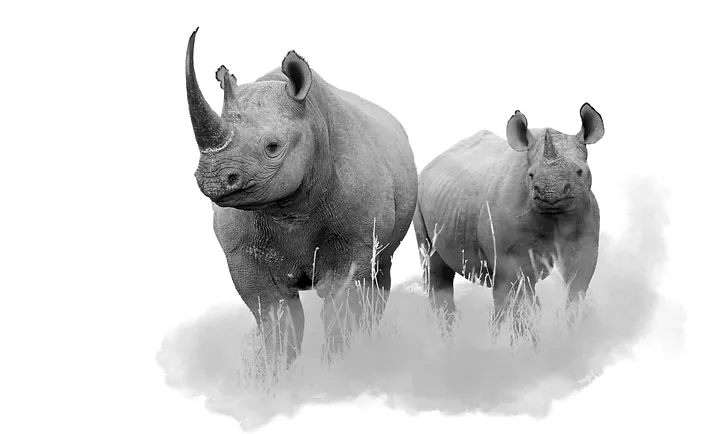
Where to Stay in Tanzania Safaris
When planning a Tanzanian safari, selecting the perfect accommodation ensures an unforgettable experience. Choose from luxury lodges, tented camps, and eco-friendly retreats, each offering unique comfort and proximity to nature, wildlife, and stunning landscapes. Tailor your stay to match your preferences, creating lasting memories amid Tanzania’s breathtaking beauty and adventure-filled settings.
The Northern Circuit Route is the longest and one of the least crowded routes to summit Mount Kilimanjaro. It is known for its scenic diversity, offering trekkers stunning views of the mountain's varied landscapes, including rainforests, alpine deserts, and volcanic formations. The route approaches the summit from the quieter northern side, providing a more remote and tranquil experience compared to other routes. It typically takes 8-9 days to complete, making it ideal for acclimatization and increasing summit success rates.
The Northern Circuit Route is renowned for its excellent acclimatization profile due to its longer duration (8-9 days) and the "walk high, sleep low" principle. The gradual ascent allows trekkers to adapt to the altitude more effectively, reducing the risk of altitude sickness. The route also includes additional days for exploration and acclimatization, such as the side trip to the Mawenzi Tarn, which further enhances the body's ability to adjust to the high altitude.
The Northern Circuit Route is considered moderately difficult. While it is longer and requires more days on the mountain, the gradual ascent makes it less physically demanding than steeper routes like the Machame or Umbwe routes. However, the extended duration means trekkers need to be prepared for multiple days of hiking and camping. The high success rate (over 90%) is attributed to the route's excellent acclimatization opportunities.
The Northern Circuit Route stands out for its remoteness, scenic beauty, and low traffic. It is the only route that circumnavigates the northern slopes of Kilimanjaro, offering unparalleled views of the mountain's diverse ecosystems. Trekkers also get to experience unique landmarks like the Shira Plateau, Lava Tower, and the rarely visited northern crater rim. Its longer duration and quieter trails make it a favorite for those seeking a more immersive and less crowded Kilimanjaro experience.
The best time to trek the Northern Circuit Route is during the dry seasons, which are from late June to October and from December to early March. These periods offer stable weather conditions, clear skies, and minimal rainfall, making the trek more enjoyable and safer. While the route is less crowded year-round, trekking during the dry seasons ensures better visibility and more comfortable hiking conditions. Avoid the rainy seasons (April-May and November) as trails can become slippery and muddy.
Share your experience with Tanzania Songbirds Safaris on TripAdvisor! Your review helps us continue creating unforgettable adventures, from thrilling wildlife safaris and Zanzibar beach escapes to cultural and historical tours. Let fellow travelers know about your journey, and inspire others to explore Tanzania’s beauty. We value your feedback and can’t wait to hear from you!
Verified Incredible Experience Around Arusha City I was skeptical about this at the beginning but still decided to give it a chance. It was very positivity surprised by how nice my tour guide was, he picked me up from my hotel and took me around the city, he speak perfect English and made me feel safe throughout the whole trip. Honestly I cannot recommend this one enough, if you want to see this incredible city through the eyes of local. Thanks you so much Israel (my absolutely great tour guide for sharing this information and experience with me). It was definitely a day that will stay in my memory forever.Verified A fascinating walking tour of Arusha with a superb guide. We thoroughly enjoyed our walking tour of Arusha with Israel. He is extremely knowledgeable about the history and people of Arusha and Tanzania. He is also very flexible and responsive and we felt that we had an authentic experience of visiting the city, its markets and attractions. As important, it was great fun and Israel is a fabulous guide. Do not hesitate to book!Verified Great Experience Incredible experience, everything went well as planned, unforgettable experience and looking forward to do it again.Verified Interesting way to learn about Arusha Israel was our guide for this trip and was a very friendly, engaging and knowledgeable tour guide. He was also mindful of our small kids (7 and 12 years old) he make sure to make them enjoying the tour and give them the top priority and the kids they come to love so much Israel. Israel he took us to the difference places in the city that we didn't expect to visit but with him we done and make so much photos and with help of Israel we feel so comfortable to do that. Thank you again Israel!Verified Amazing guided tour by Israel Israel was a wonderful guide who taught me so much about the historic and cultural city of Arusha in the north region of Tanzania. I learned a lot of the German history at the museum, and then we visited multiple markets to learn about how the people live their daily lives. I would 100% recommend this tour to anyone looking to learn a little more about Arusha before or after their Safari.Verified Fantastic trip. Five star Fabulous- every day is a school day! I would recommend this trip for couples, friends, solo and family travellers. Christopher the guide is friendly, kind and extremely knowledgeable. He has a route planned but is flexible and generous with her time. We started at the top of the natural history museum. The group was small and there's was no pleasure on time.I recommend this trip for any tourist aroundVerified Highly recommend Arusha walking city tour! Christine was an amazing guide and demonstrated great knowledge to fulfill my understanding of the history of Arusha. The tour was designed well and we started by visit the natural history museum, Tanzaninite museum and shop, maasai market, local food market, cultural heritage and art gallery and I love so much the local street and food market and is one of the places without local guide is difficult to visit and to be comfortable.Christine was very friendly and maintained welfare of the groupVerified A lovely explore through Arusha with a friendly guide Wonderful tour we really felt like a friend, learning about the history of Arusha abd Tanzania too, abd taking routes around the city we would not have discovered! Israel was more than happy to give restaurant recommendations to us which went beyond the route he took us. Arusha is a nothing to see if you can't take a local guide to show you the city, (With great guide Israel we enjoyed the tour, feel safety walking in the street, visit different local areas, some tourist and some are not). Highly recommend to get your bearings and understand this beautiful city more!Verified I you only do one tour of Arusha make it this one I found this tour recommended by some of my friends who did this tour the time when spent in Tanzania and Arusha, the booking and communication with the operator was smooth and prompt. Our guide was assigned Israel as our guide and I can't thank him enough! Isra was super warm, accommodating and hilariously funny, but also extremely knowledgeable and engaging, which made a huge difference! It was awesome to hear him take on so many relevant topics related to Tanzanias fascinating recent history and development. I also thought the tour was extreme well curated, I interesting and also learning so much about Tanzania.Highly recommend!Verified Very Informative Walking Tour If you don't know where to start exploring Arusha, this tour is a must especially for the tourist like me you need to take this tour to get well see the city.Our guide Christine, was very well versed in the local history, traditions, culinary delights and points interest. She also speaks very good English and has an amazing uniquely Tanzania sense of humor.We enjoyed the 3 hour walk in Arusha and gave me more ideas as to what I want to explore further. Highly recommend
